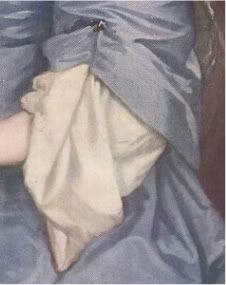
The sleeves look like they have been either pinned up or basted to the gown’s sleeves.
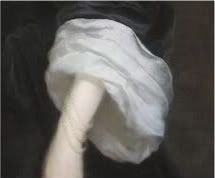

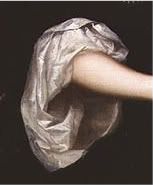
(Black sleeve from a Swedish painting)
So the sleeves are no problem, but how to make the body of the shift? The neckline treatment can look very different. Looking through Janet Arnold’s Patterns of Fashions 4, I find that most of the shifts are versions of this (Or rather, thjis is a modern version of that...). I don’t think I’m too far-fetched is I assumes that these are made up that way:


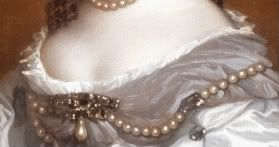
It’s nothing wrong with this kind of chemise. It’s easy to make and the chemise itself looks very nice. I have one. I just don’t want it with a 17th century gown. Then these are many painting where you just see the edge of the shift along the neckline.
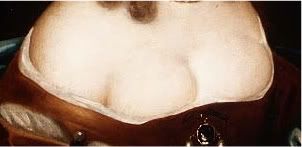
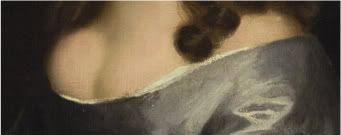
They could be the gathered kind of chemise, I suppose, but they look, at least in my eyes, to be much smoother. When we see more of it, the wrinkling gets more horizontal than vertical.
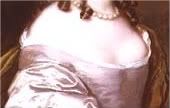
And lucky us! The very last pattern in Patterns of Fashion 4 is a shift that fits the bill. It is thought to have belonged to Catherine of Braganza and though it has very wide sleeves, though the neckline is shaped like a smooth oval with a slit in the front.
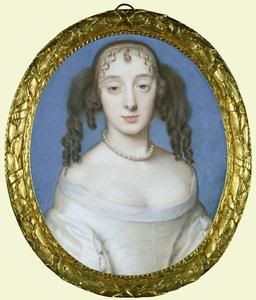
My books are still unpacked so I can’t give you a direct quote, but I’ve read in more than one book, that the shift was sometimes pulled out and folded over to make a simple collar. I think that would be pretty easy to do if you are wearing a Catherina of Braganza-type of shift.
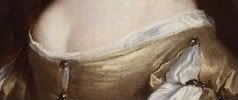


Some even look like the slit is in place too!

To finish, let’s look at two examples of collars that imitates a folded out shift, if it isn’t the shift that imitates the collar.
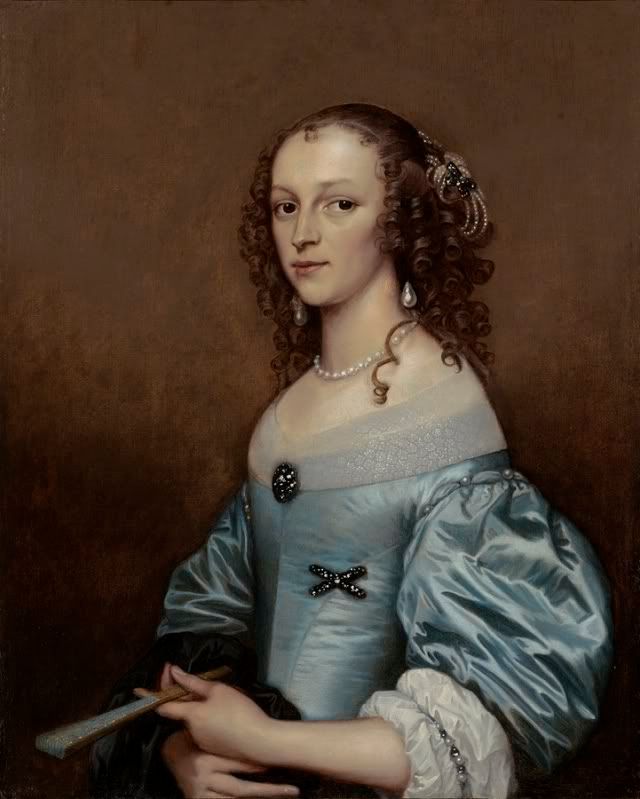
This is a French gown, it could be a shift, but it’s so much more gossamer than the visible shift.
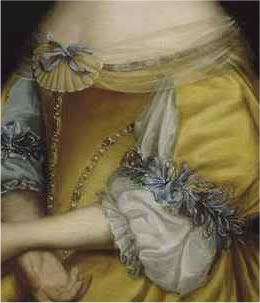
I really like the look of a shift that is folded to look like a collar, so that is the look I will go for. The Catherine of Braganza-shift is also unusual because it hasn’t triangular gores to give it width, but squares that are cartridge-pleated at the top. It would be fun to make a new pattern!
Note: In a try to be more consistent, I have tried to only use English picture sources and in case not, I will tell. However, the time frame is 1640s-1660s. I know that this will mean both puritans and Restoration, but I feel that the fashion didn’t change too dramatically under that period. Many of the paintings don’t have a more exact date than the decade. Also, if anyone wants to see the whole picture of one of my cropped ones, just tell me and I will post it.
8 comments:
cheers! I hadn't thought much about the shift or chemise to wear under the 1660 gown - I supposed I would just do a tightly gathered voile one, very simple, but now I'm re-thinking it. I don't have Patterns of Fashion 4...maybe ought to get it, huh!
Very interesting! Can't wait to see what you come up with- I usually just think of shifts as these things that essentially didn't change for a centuries, but it's nice to know there were variants!
And now I want PoF 4 too!
American Duchess. I think a gathered one is perfectly fine, it's just me being perverse. ;-D
The Dreamstress: Generally I don't think they did, but I agree, it's nice to know of the variants.
And yes, you both need PoF4! :-D
Isis, who is that final portrait of, and who is it by? I LOVE it and can't wait to see the full portrait!
Dreamstress, it is Elizabeth D'Orleans, the wife of Phillip, duke of D'Orleans. It's one in a series of court ladies, so it is probably not a good likeness and I don't know the painter. I had a link to a whole tow of them, but I can't find it. Here is the actual portrait, though:
http://smg.photobucket.com/albums/v159/Isis33/1600-tal/?action=view¤t=Elizabeth_duch_Orleans_stud_Beabrun.jpg
Ah, found it: Here it is:
http://lagarderobe.e-monsite.com/album-cat-1-28081.html
http://commons.wikimedia.org/wiki/File:Bad-mit-Schokolade-17-Jahrhundert.jpg
Martha: Thank you, I haven't seen that picture before!
Post a Comment